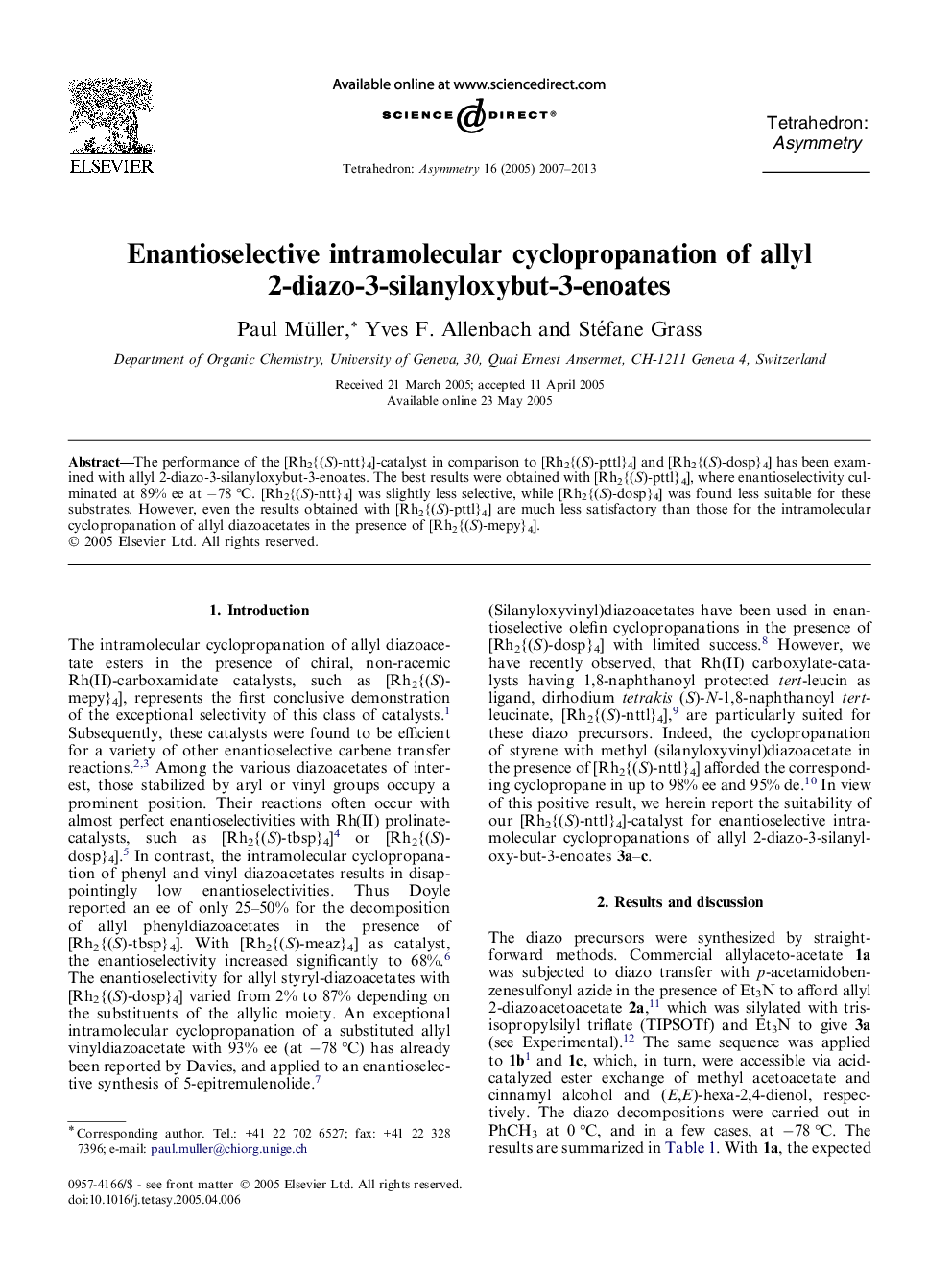| Article ID | Journal | Published Year | Pages | File Type |
|---|---|---|---|---|
| 1350060 | Tetrahedron: Asymmetry | 2013 | 7 Pages |
The performance of the [Rh2{(S)-ntt}4]-catalyst in comparison to [Rh2{(S)-pttl}4] and [Rh2{(S)-dosp}4] has been examined with allyl 2-diazo-3-silanyloxybut-3-enoates. The best results were obtained with [Rh2{(S)-pttl}4], where enantioselectivity culminated at 89% ee at −78 °C. [Rh2{(S)-ntt}4] was slightly less selective, while [Rh2{(S)-dosp}4] was found less suitable for these substrates. However, even the results obtained with [Rh2{(S)-pttl}4] are much less satisfactory than those for the intramolecular cyclopropanation of allyl diazoacetates in the presence of [Rh2{(S)-mepy}4].
Graphical abstractFigure optionsDownload full-size imageDownload as PowerPoint slide
(1R,5S)-1-[1-Tri(isopropyl)silanyloxy-vinyl]-3-oxa-bicyclo-[3.1.0]hexan-2-oneC16H28O3SiEe = 47%[α]D20=+49 (c 1.17, CHCl3)Source of chirality: catalytic enantioselective cyclopropanationAbsolute configuration: (1R,5S)
(3aR,6R) 6-Methyl-8-[tri(isopropyl)-silanyloxy]-3,3a,6,7-tetrahydrocyclohepta[c]-furan-1-oneC16H25O3SiEe = 67%[α]D20=-40 (c 1.04, CHCl3)Source of chirality: catalytic enantioselective cyclopropanationAbsolute configuration: (3aR,6R)
